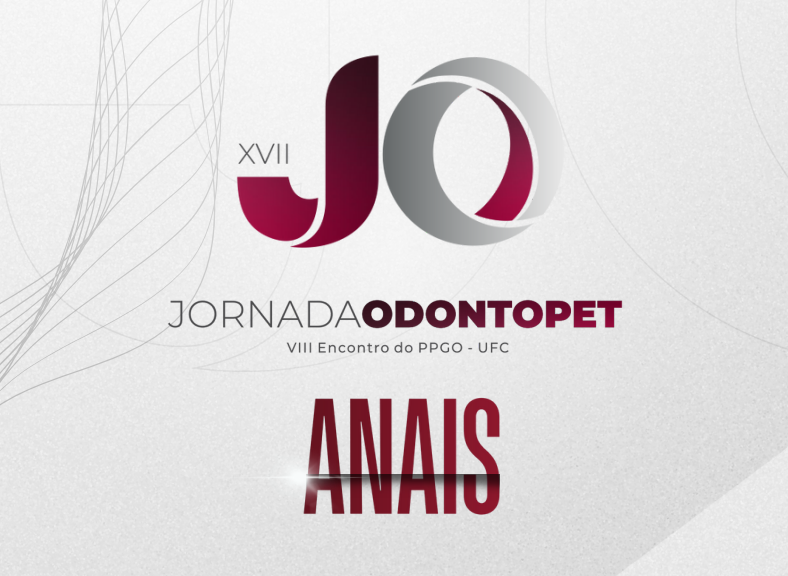DEVELOPMENT OF A SELF-CURED ACRYLIC RESIN NANOCOMPOSITE WITH CHLORHEXIDINE LOADED-HALLOYSITE NANOTUBES FOR DENTAL APPLICATIONS
Conteúdo do artigo principal
Resumo
The incorporation of antimicrobials in dental materials has been investigated as a strategy for the prevention and treatment of oral diseases. This study aimed to synthesize halloysite nanotubes (HNTs) loaded with chlorhexidine (CHX) and incorporate them into a self-cured acrylic resin (SAR). The incorporation efficiency (IE) was calculated and the characterization of HNT/CHX was performed by means of morphological evaluations, Fourier transforms infrared spectroscopy and thermal analyses. SAR disks were made with concentrations of 0, 3, 5, and 10% of HNT/CHX. Spectral measurements (n=3) were performed for up to 50 days to examine CHX release. Agar plates, with Candida albicans (CA) and Streptococcus mutans (SM), were used to measure the inhibition zones. Microhardness and color analyses (n=9) were performed at baseline and after 30 days of immersion in distilled water. Finally, the surface topography was verified. Data were analyzed using ANOVA/Bonferroni and paired t-tests. The IE obtained was 8.15%. Samples with 10% showed controlled CHX release throughout the observed period. Antimicrobial activity was verified for CA and SM for all the test groups. After 30 days, the 10% group showed a significant increase in hardness (p<0.05), and a progressive color change was observed (p<0.001), within acceptability standards, with the increase in the concentration. The modification of the SAR showed a controlled CHX release, without compromising the evaluated properties.
Detalhes do artigo

Este trabalho está licenciado sob uma licença Creative Commons Attribution 4.0 International License.
Authors retain the copyright of their articles and grant the journal the right of first publication under the Creative Commons Attribution (CC BY) license, which allows others to share and adapt the work with proper attribution.
Referências
Não aplicável.
